DEFINITION OF TERMS:
- KEYSTONE means they are listed by National Wildlife Federation as core plants for a wildlife garden in my ecoregion (Ecoregion 8).
- NOT QUITE NATIVE means they are slightly out of range but adjacent to NYS as determined by GoBotany and NY Flora Atlas.
- Otherwise the plant is a NY-native or native to the area noted.
Fragrant sumac (Rhus aromatica)
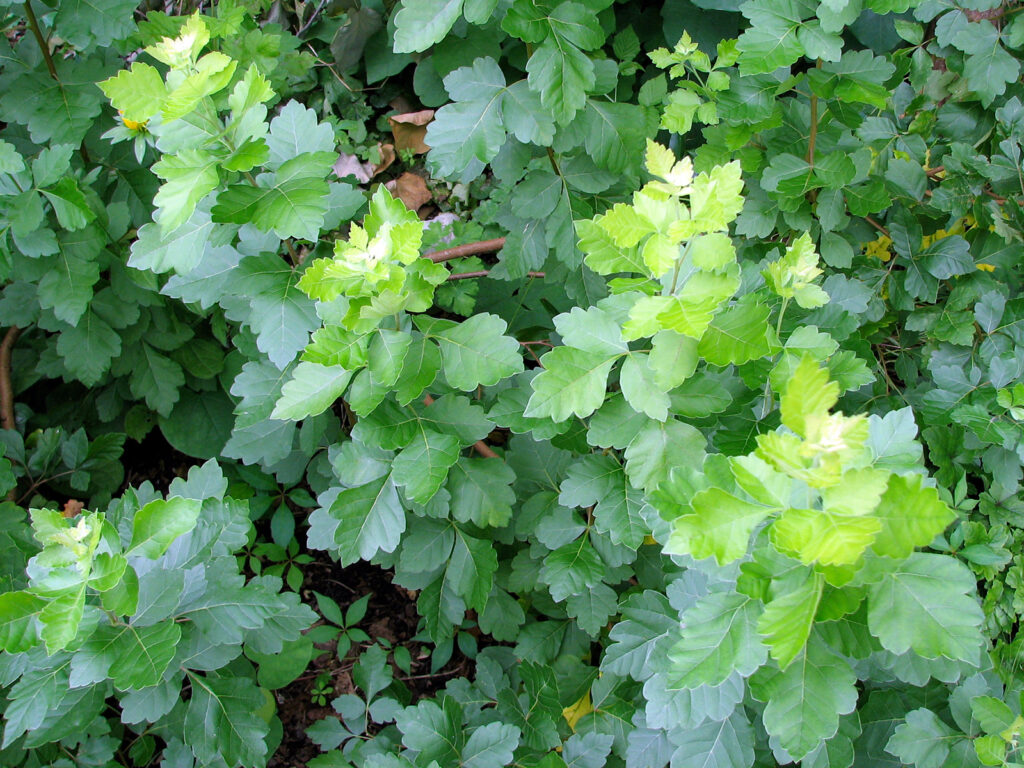
We planted this in what was then a sunny area, but which gradually became a shaded area. Our shade-grown plants aren’t quite as colorful as they’d be if they were in the sun, but even so, they’re very attractive in the fall. This may be called “fragrant” but “scented” might be a better term since it isn’t a sweet fragrance.
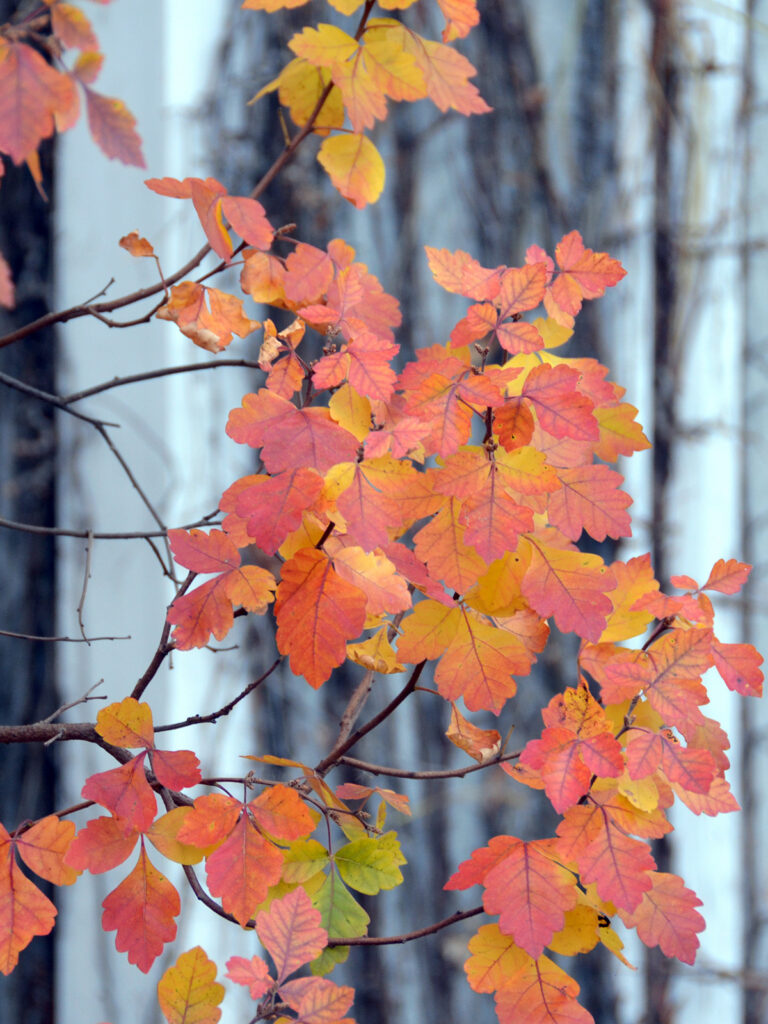
The parts in the sun turn color and with enough sun, it would produce berries.
Larval host plant: Banded Hairstreak and Red-banded Hairstreak
** SPECIAL VALUE TO NATIVE BEES **
** PROVIDES NESTING MATERIALS / STRUCTURE FOR NATIVE BEES **
- Learn more:
- Wildflower Center: Fragrant sumac
KEYSTONE: Carolina rose (Rosa carolina)
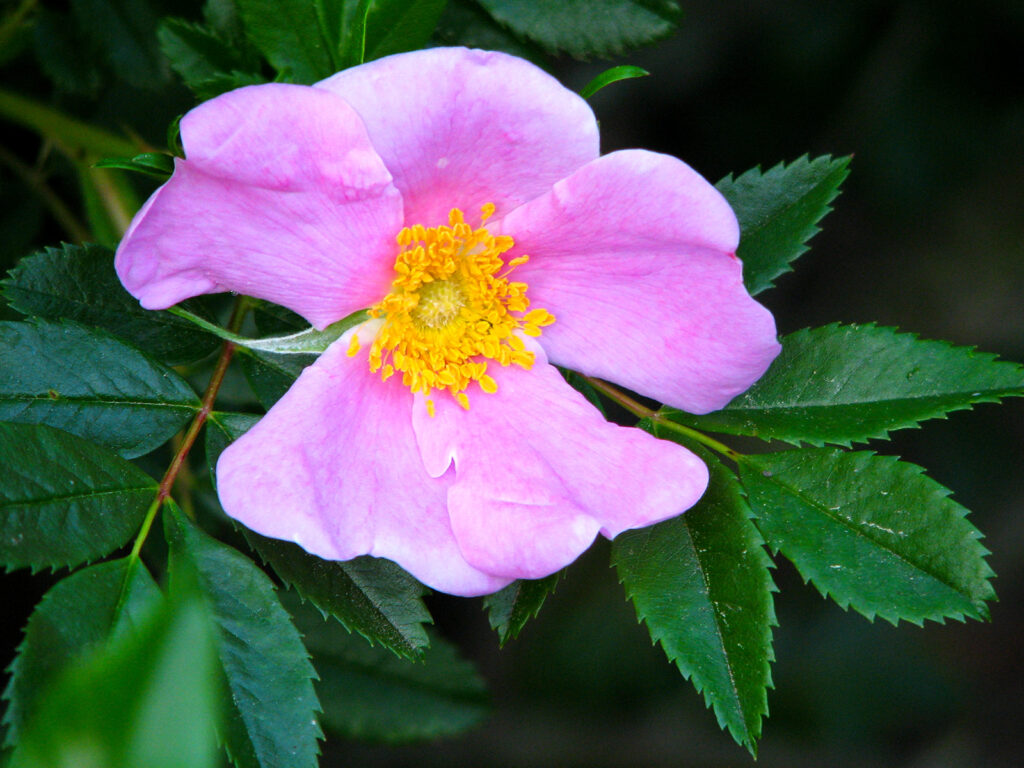
Carolina rose is also known as pasture rose. I like the lustrous green leaves and the pink flowers. It definitely is different from the Virginia rose I’m used to, and it’s much taller.
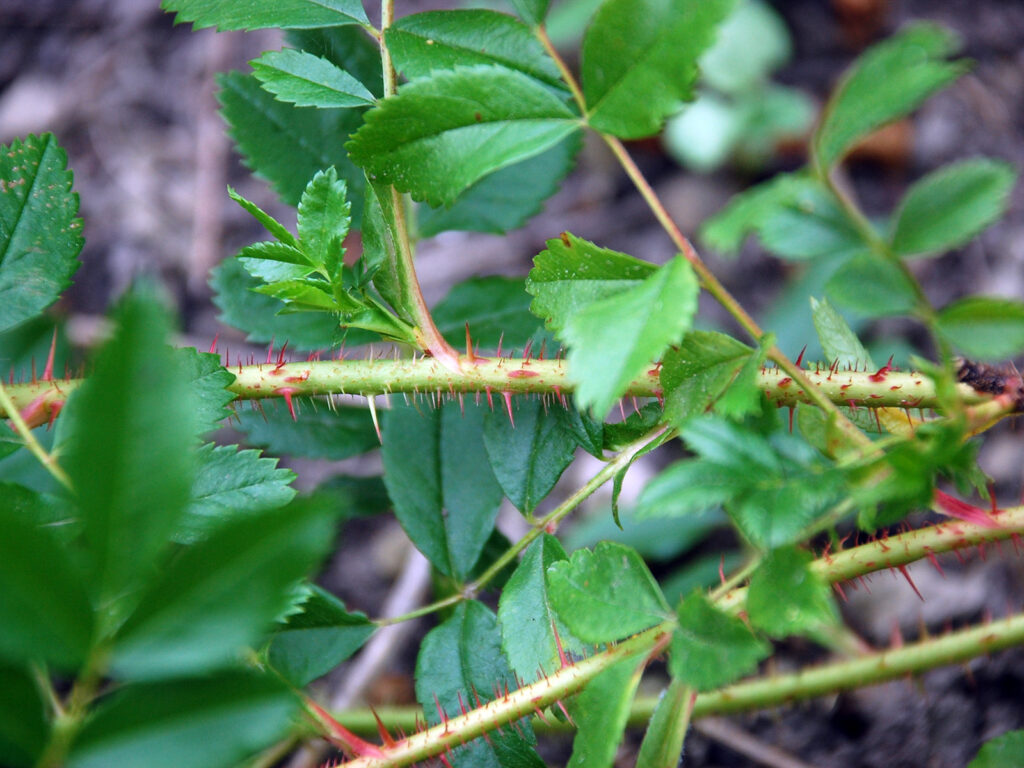
Carolina rose has very bristly thorns along the stem in contrast to Virginia rose, making a bit harder to work around. It spreads quite a bit, too, so it’s not one for limited space.
In fact, as it spread more, I have been removing it since it’s just too difficult to work around. If I had more space, I’d definitely grow this where I could see it, but not “visit” it!
** SPECIAL VALUE TO NATIVE BEES **
** SPECIAL VALUE TO BUMBLE BEES **
** PROVIDES NESTING MATERIALS / STRUCTURE FOR NATIVE BEES **
- Learn more:
- Wildflower Center: Carolina rose
KEYSTONE: Virginia rose (Rosa virginiana)
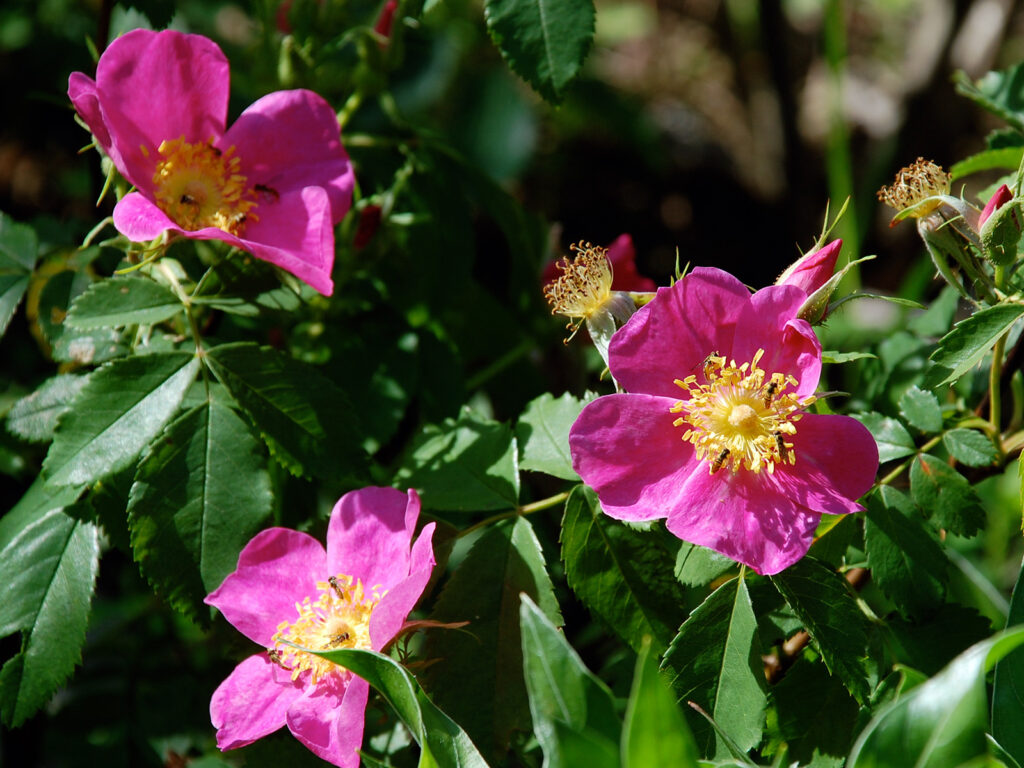
These roses are a legacy from the house where I grew up many years ago. The hillside near our house was full of native plants, and this was one we had transplanted to our yard (in the 50s, before the idea of not taking from the wild developed). We transplanted it when we moved when I was young, and then later to our current yard from my mother’s house.
These simple flowers — so unlike the hybrids — are perfect for bees. And they have a simple elegance I’ve come to appreciate.
The numerous rose hips provide nutritious food for wildlife.
UPDATE: For the last few years, this plant seems to be in decline. I’m not sure why, but I’d like to get a few more to replace it.

The fall color is just as attractive as the flowers.
** SPECIAL VALUE TO NATIVE BEES **
** SPECIAL VALUE TO BUMBLE BEES **
** PROVIDES NESTING MATERIALS / STRUCTURE FOR NATIVE BEES **
- Learn more:
- Wildflower Center: Virginia rose
- The Humane Gardener: A rose by any other name
KEYSTONE: Flowering raspberry (Rubus odoratus)
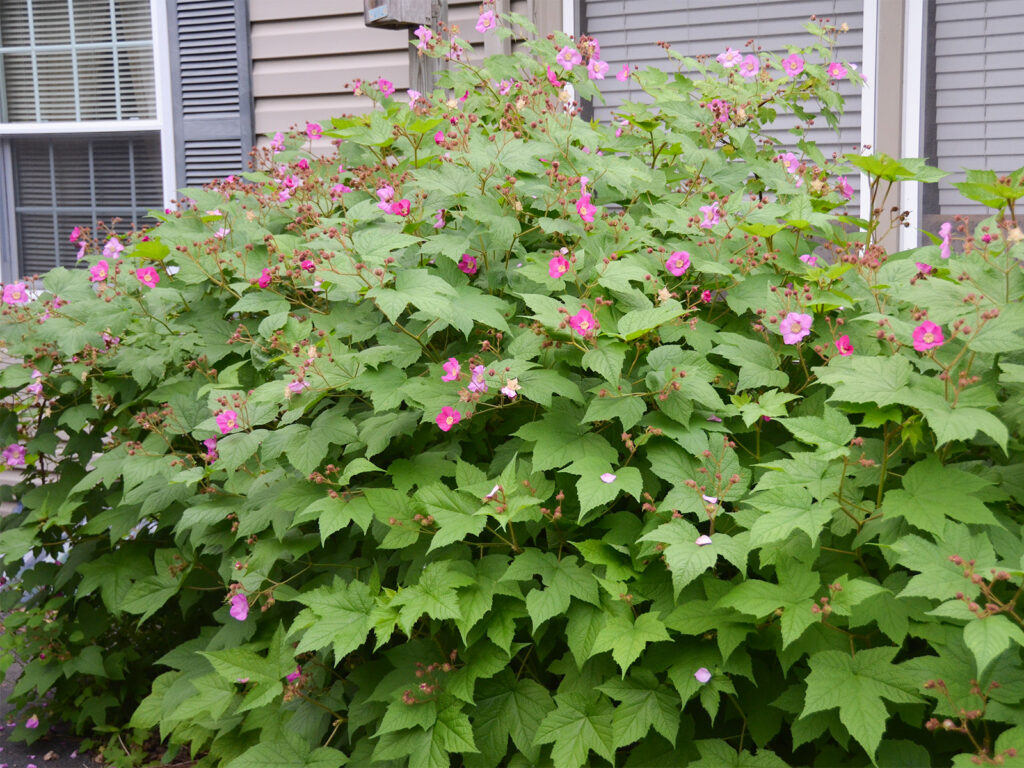
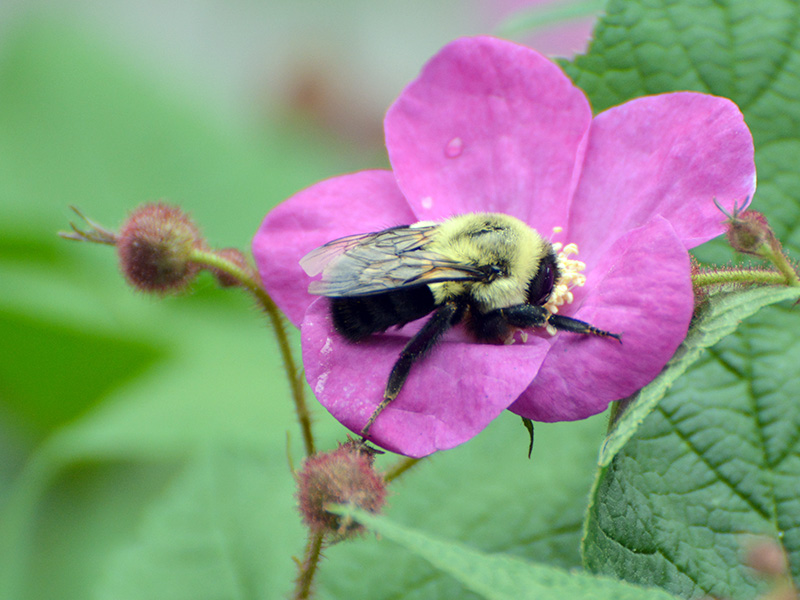
I love this plant, and the bees like it, too. Its flower is quite simple, but colorful, and its leaves are very attractive. You can tell it’s in the rose family!
But even though it’s in the rose family, it doesn’t have any thorns — an important characteristic in a small yard.
We have two plants, each in a different location. In one location, it’s fairly small; in the other, it’s really taken off and has become quite large and rambunctious. I’ve defined a generous-sized location for it, and I remove any canes that come up outside that boundary. In fact, I’ve had to create a “policy” for it: I prune out any part that goes beyond end of the porch.

This is the “raspberry” it produces. It’s actually less spherical than it appears. It’s more like a raspberry cut it half crosswise — cup-shaped.
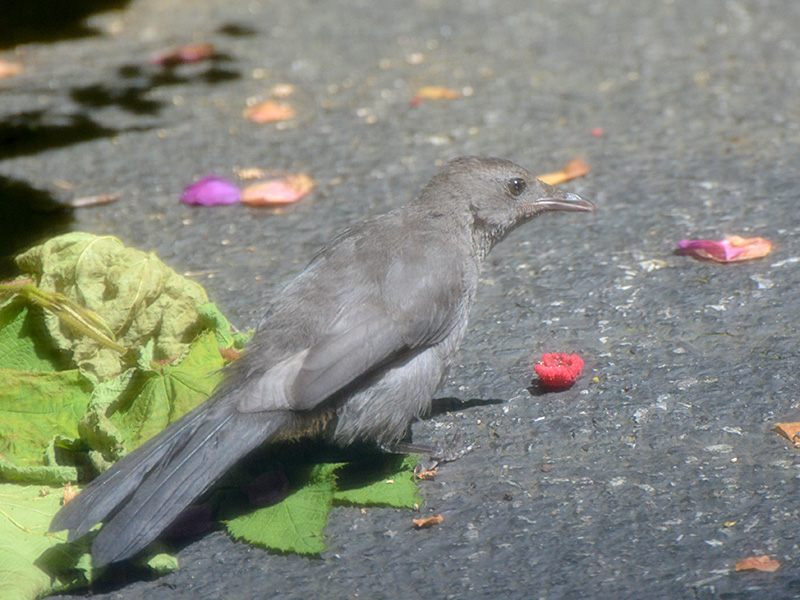
It’s purported to be edible, though I don’t consider it very tasty. I prefer letting the catbirds and robins eat my share.
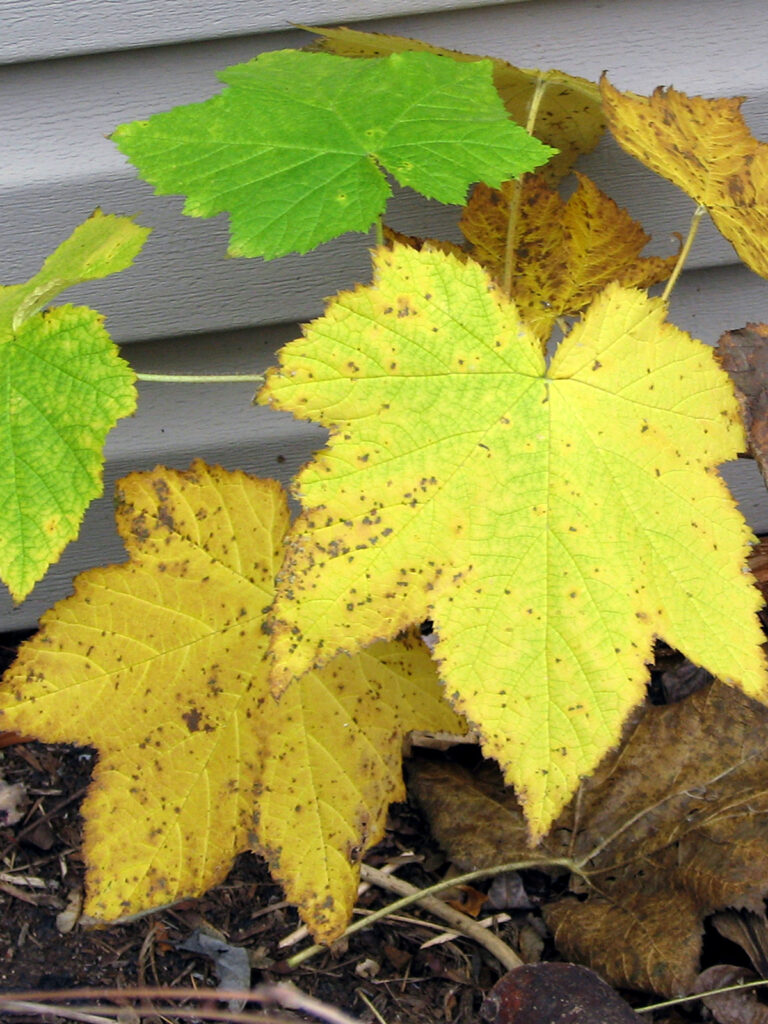
The leaves are quite colorful in the fall.
Wildlife: Very high for birds; mammals
** SPECIAL VALUE TO NATIVE BEES **
** SPECIAL VALUE TO BUMBLE BEES **
** PROVIDES NESTING MATERIALS / STRUCTURE FOR NATIVE BEES **
- Learn more:
- Wildflower Center: Flowering raspberry
